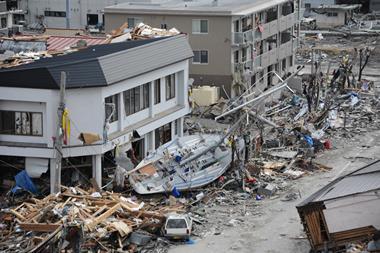The natural disaster in Japan has shown just how vital preparation and planning is, but for complete cover, companies and organisations must expect the unexpected
Even in a country famously well prepared for natural disasters it was the nightmare scenario: at 14:46 on 11 March, a massive, magnitude 9 earthquake barreled through the seabed off Japan’s north-east coast creating a tsunami that devastated the coastal zone. Among the resulting chaos there was one question that became more and more urgent: what about the nuclear power stations?
Despite initial reassurances, within hours a state of emergency was declared at the Fukushima nuclear facility, and suddenly the global media was locked on. But despite everything that has happened at Fukushima nuclear complex, there are reasons to be reassured; in many ways the reactors did exactly what they were designed to do.
When the quake hit, all the operating reactors ‘tripped’, safely halting the nuclear fi ssion process. But because the fuel continued to produce large amounts of heat, the battle was on the keep it cool and avoid a catastrophic meltdown. This has been far from easy, and a month after the quake, on 12 April, the Japanese authorities raised the threat level to seven – the same status as Chernobyl.
The main lesson from the ongoing situation in Japan is not so much ‘be prepared’, as ‘be more prepared’.
All businesses have some contingencies in place to survive upheaval of various kinds. But recently, entirely unpredictable events such as those in Japan have clearly demonstrated that these may not be enough, and shrewd risk managers should be looking again at potential vulnerabilities right across their supply chains, human resources, fi nance, transport and technology.
Nuclear power operators are obsessed with safety and yet at Fukushima emergency cooling pumps and generators repeatedly failed. A fi re engine brought in to help ran out of fuel. Ask yourself: are your back-ups enough?
In the teeth of a problem, Fukushima has shown that good communication is key, both internally to keep coherence and focus within the business, and externally to ensure the public has clear, accurate information about what is happening. This has multiple benefi ts:
• minimising the spread of fear and panic, which can dramatically exacerbate problems;
• enrolling staff and public support in any mitigation strategies; and
• reputation management.
If possible, a dedicated team should be available to manage communications, deal with public and media questions and have the authority and access to get whatever information they need. It is essential this team is present across social media as well, as Japan has shown how sites like Twitter and Facebook were key in disseminating information.
For the full feature see the May issue of StrategicRISK



















